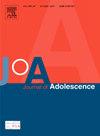Promising Practices of Out-of-School Time Programs for Low-Income Adolescents: A Systematic Review
Abstract
Introduction
Out-of-school time (OST) programs can have a positive impact on youth outcomes, including academic achievement and social-emotional development. However, there are vast inequities in program accessibility and quality, with low-income adolescents being particularly underserved. This study synthesizes research on OST programs serving low-income adolescents in the United States to identify promising practices in staffing, participant recruitment, and participant engagement, emphasizing approaches that foster positive youth development (PYD).
Methods
A systematic literature review was conducted using PRISMA guidelines, incorporating searches of three academic databases and supplementary sources. After applying inclusion and exclusion criteria, 118 studies representing 100 discrete OST programs serving adolescents (aged 11–18) were included. Data were analyzed to identify promising OST program practices.
Results
Key findings reveal strategies for hiring, training, and retaining staff, including the importance of strong leadership, professional development, and community connections. Effective participant recruitment strategies leverage existing relationships with trusted adults and peers, communicate program benefits such as skill-building and social connection, address barriers like transportation and cost, and deliver programming in accessible, familiar community spaces. The review also yielded seven engagement strategies—agency, relevance, competence, belonging, exposure, and safety/wellness—which align closely with PYD and are promoted through developmentally appropriate and culturally responsive activities, pedagogies and policies.
Conclusion
By illuminating the “how” of OST program success, this review contributes to the growing body of knowledge of practices that can promote equity and positive development for underserved youth. Future research is needed to explore and refine strategies for reaching and supporting diverse adolescent populations.


 求助内容:
求助内容: 应助结果提醒方式:
应助结果提醒方式:


